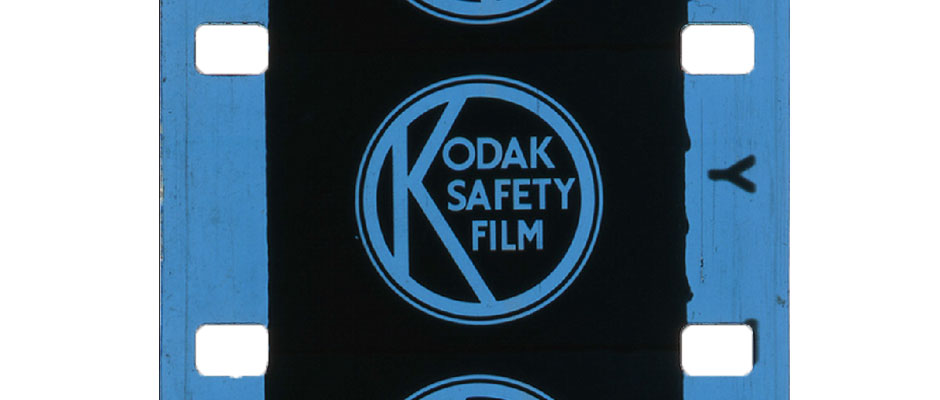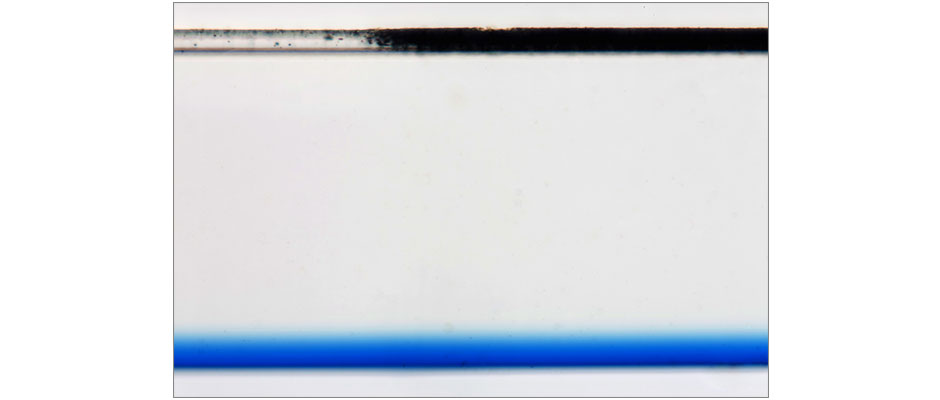


16mm print on cellulose acetate support.

Dyes are applied to the film support. The black-and-white image layer is colorless.
Process DescriptionPre-tinted film bases were first introduced by European film manufacturers in the 1910s. Pre-tinted film bases were impregnated with dye during film manufacture. As a result, color and depth of tints were standardized to a high degree of uniformity, eliminating uneven results that sometimes occurred with the dye bath method. In 1921, Kodak introduced nine different colors: red, pink, orange, amber, light amber, yellow, green, blue, and lavender. In 1929, when sound-on-film became common, Kodak introduced Sonochrome, pre-tinted film stocks in seventeen different hues that could accommodate soundtracks. |
|